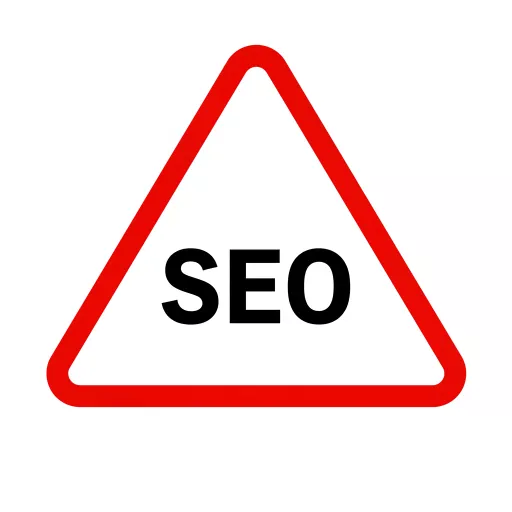Building a small business website is more than just picking a nice design and adding your logo. To truly connect with your audience, build trust, and drive results, you need to include the essential pages every small business website needs. These pages aren’t just “nice to have”—they’re the backbone of your online presence, helping visitors find what they need and encouraging them to take action.

In this guide, we’ll break down the must-have pages for any small business website, explain why each one matters, and share tips to make them shine. Whether you’re launching your first site or giving your current one a refresh, this article will help you get it right.
Why Your Website Structure Matters
Before we dive into the specific pages, let’s talk about why structure is so important. A well-organised website makes it easy for visitors to find information, which keeps them engaged and more likely to become customers. Plus, search engines like Google reward clear, logical site structures with better rankings, so you’ll get more eyes on your business.
The Must-Have Pages for Every Small Business Website
Let’s explore the five essential pages every small business website needs: Homepage, About, Contact, Services/Products, and Privacy Policy. We’ll also touch on a few bonus pages that can give your site an extra edge.
Homepage: Your Digital Welcome Mat
Your Homepage is the first thing most visitors will see. Think of it as your digital shopfront—it needs to make a strong first impression and quickly communicate who you are and what you offer.
What to Include on Your Homepage
- A clear headline that sums up your business
- A brief introduction to your products or services
- Eye-catching images or graphics
- A prominent call-to-action (CTA), like “Contact Us” or “View Our Services”
- Easy navigation to other key pages
A great homepage doesn’t overwhelm visitors. Instead, it guides them to the next step, whether that’s learning more about you, browsing your services, or getting in touch.
SEO Tip
Use your primary keyword (e.g., “Perth camping supplies”) naturally in your headline and introductory text. This helps search engines understand what your site is about right from the start.
About Page: Build Trust and Tell Your Story
The About page is where you get to show the human side of your business. People want to know who they’re dealing with, especially when choosing a local business.
What to Include on Your About Page
- Your business’s story: how and why you started
- Your mission, values, and what sets you apart
- Photos of your team or workspace (real images, not just stock photos)
- Any awards, certifications, or community involvement
Don’t be afraid to let your personality shine through. A friendly, conversational tone helps visitors feel connected to you.
SEO Tip

Include your business name and location naturally in the text. For example, “At Perth Pet Groomers, we believe every animal deserves gentle, professional care—just like our own pets at home.”
Contact Page: Make It Easy to Connect
If someone wants to reach out, don’t make them hunt for your details! Your Contact page should be easy to find and simple to use.
What to Include on Your Contact Page
- Your business email address
- Phone number
- Physical address (if you have a shopfront or office)
- A contact form for quick enquiries
- Links to your social media profiles
Consider adding a map if you serve a local area, and let people know your business hours. The easier you make it to get in touch, the more likely people are to reach out.
SEO Tip
Use phrases like “Contact [Your Business Name]” in your headings and meta tags to help with local search visibility.
Services or Products Page: Show What You Offer
This is where you get down to business. Your Services or Products page should clearly explain what you offer, who it’s for, and why it’s valuable.
What to Include on Your Services/Products Page
- A list of your main services or products, each with a short description
- Pricing information (if possible), or a prompt to request a quote
- High-quality images or videos
- Testimonials or case studies from happy customers
- Clear CTAs, like “Book Now,” “Get a Quote,” or “Shop Now”
If you offer multiple services, consider breaking them into categories or using subpages for each one. This keeps things organised and helps with SEO.
SEO Tip
Use keywords related to your services or products throughout the page, but keep it natural. For example, “Our Fremantle bookkeeping solutions make managing your business finances simple.”
Privacy Policy: Build Trust and Stay Compliant
A Privacy Policy isn’t just a legal requirement—it’s also a sign that you respect your visitors’ data. If you collect any personal information (like names, emails, or payment details), you need a clear privacy policy.
What to Include in Your Privacy Policy
- What information you collect and why
- How you store and protect data
- Whether you share information with third parties
- How users can contact you about privacy concerns
Write your privacy policy in plain English—no legal jargon! This reassures visitors and helps you comply with privacy laws.
SEO Tip
Link to your privacy policy from your website footer so it’s accessible from every page.
Bonus Pages to Consider
While the five pages above are the essentials, there are a few more that can help your business website stand out:
- FAQ Page: Answer common questions to save time and build trust.
- Testimonials/Reviews: Show off positive feedback from real customers.
- Portfolio or Case Studies: Highlight your best work or success stories.
- Blog: Share tips, news, or updates to engage visitors and boost SEO.
- Terms and Conditions: Set clear expectations for your services or products.
Adding these pages can improve your site’s credibility and help convert more visitors into customers.
Tips for Making Your Website Pages Work Harder
- Keep it simple: Don’t overload pages with too much information. Use clear headings, short paragraphs, and plenty of white space.
- Use strong calls-to-action: Tell visitors exactly what you want them to do next.
- Optimise for mobile: Make sure your site looks great and works smoothly on phones and tablets.
- Update regularly: Keep your content fresh and accurate, especially your contact details and service offerings.
- Add internal links: Link between your pages to help visitors (and search engines) navigate your site.
Final Thoughts
Getting your website structure right is one of the best things you can do for your small business. By including these essential pages every small business website needs, you’ll create a site that’s easy to use, builds trust, and helps you grow.
Remember, your website is often the first impression people have of your business. Make it count by being clear, friendly, and helpful at every step.


